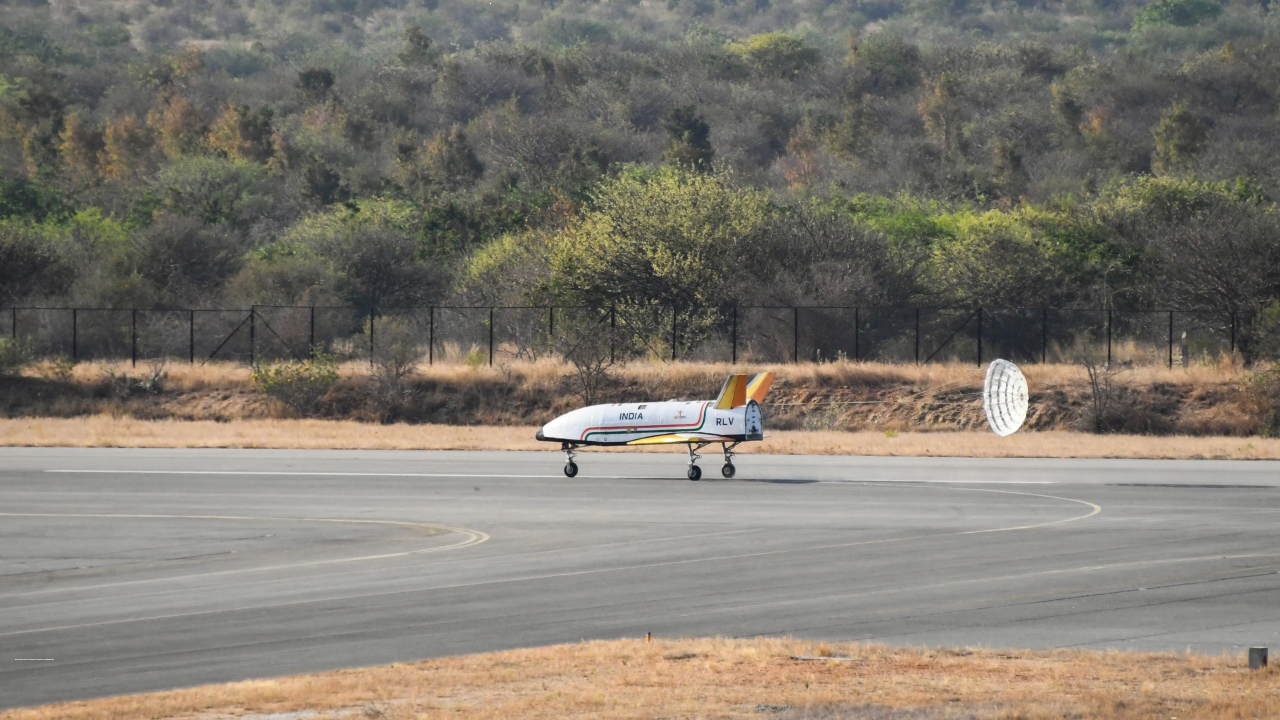Reusable Launch Vehicle Autonomous Landing Mission
On April 2, 2023, the Indian Space Research Organisation (ISRO) conducted a successful Reusable Launch Vehicle Autonomous Landing Mission (RLV LEX) at the Aeronautical Test Range (ATR) in Chitradurga, Karnataka.
Overview of RLV LEX
RLV LEX is a technology demonstrator project that aims to develop a space plane capable of carrying a payload to orbit and returning to Earth to land like an aircraft. The RLV-TD (Technology Demonstrator) is a scaled-down prototype of the final RLV, which will be much larger and capable of carrying a crew and cargo to space. The RLV-TD is 6.5 meters long, has a wingspan of 3.6 meters, and weighs 1.75 tons.
The RLV LEX Test
The RLV LEX test was conducted on April 2 this year. The RLV-TD was released at an altitude of 4.5 km (above MSL) and a down range of 4.6 km. The release covered ten parameters, including release mechanism, guidance system, control, and navigation. The purpose of the test was to perform approach and landing maneuvers, and the RLV-TD completed an autonomous landing successfully.
RLV Characteristics
The RLV has a low lift to drag ratio, which means that it generates less lift and more drag than a conventional aircraft. This characteristic allows the RLV to slow down quickly during re-entry and landing, which is essential for safe and controlled landings. The RLV is also designed to land at a speed of 350 kmph, which is slower than a typical commercial jetliner.
Previous RLV-TD Demonstrations
The RLV-TD has undergone several successful demonstrations, including the Hypersonic Flight Experiment (HEX) in May 2016. The main accomplishment of the HEX mission was the re-entry of a hypersonic sub-orbital vehicle, which demonstrated India’s capability to develop hypersonic technologies for military and civilian applications.
Future of RLV Development
The ultimate goal of developing RLVs is to enable low-cost access to space, which is essential for advancing space exploration and scientific research. RLVs can reduce launch costs significantly by enabling the reuse of launch vehicles, which eliminates the need for building new launch vehicles for every mission. The successful RLV LEX test is a significant step towards achieving this goal, and ISRO plans to conduct more tests to improve the technology further.
Month: Current Affairs – April, 2023
Category: Science & Technology Current Affairs


